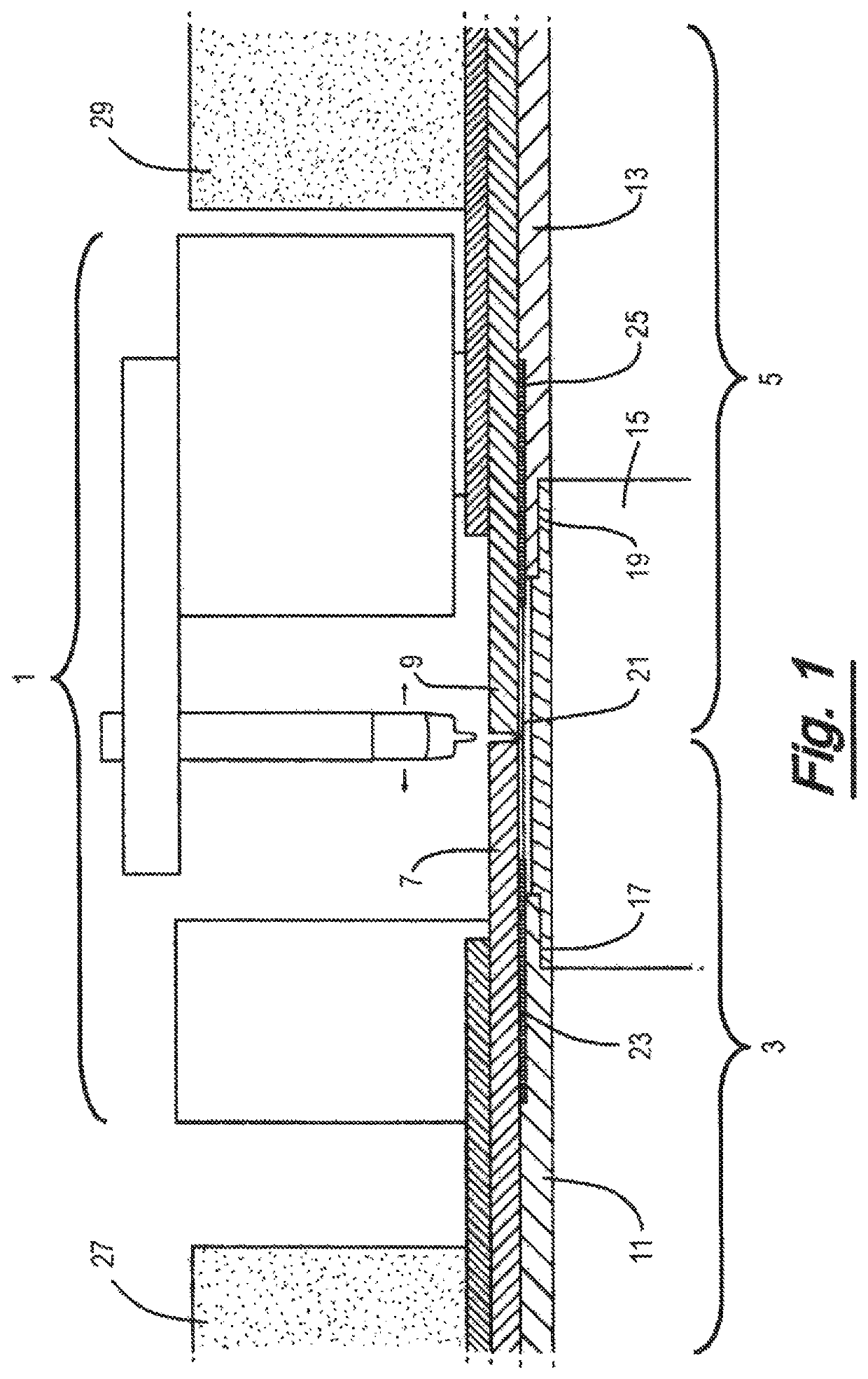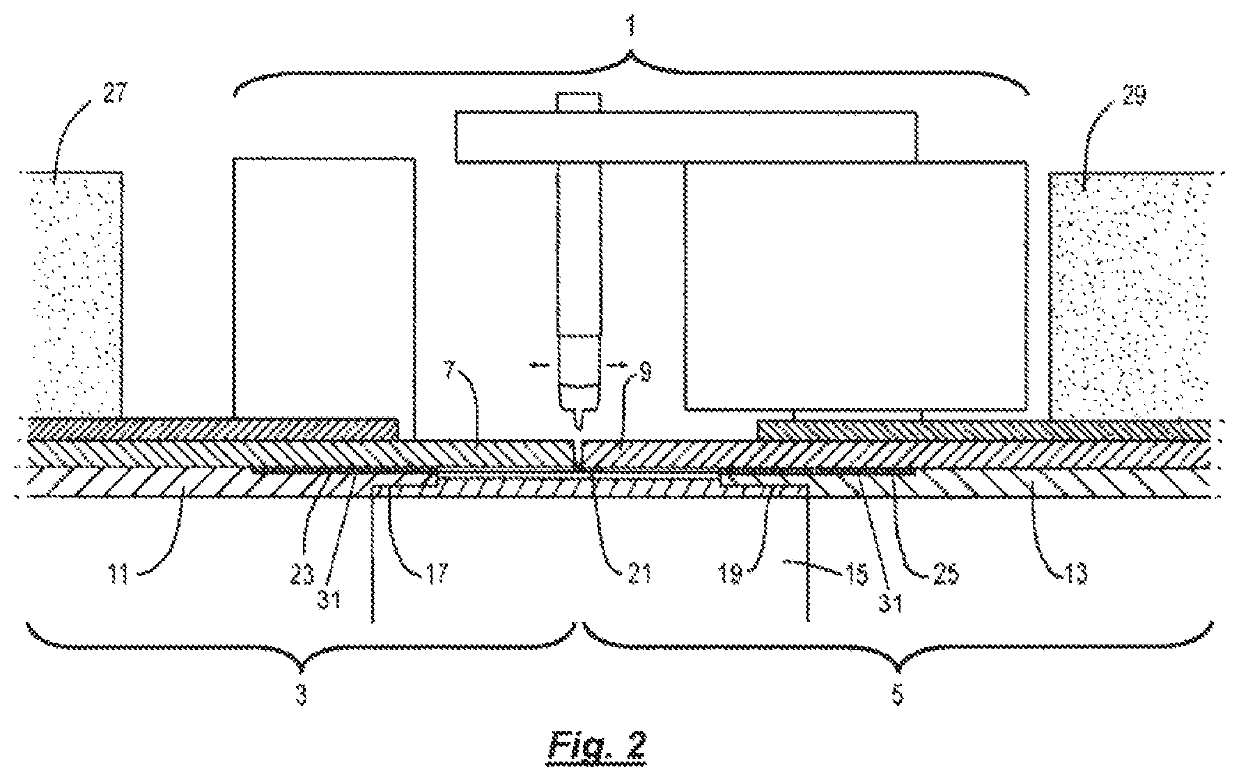Joining lined pipe sections
a technology of lined pipes and joints, applied in the direction of rigid pipes, corrosion prevention, coatings, etc., can solve the problem of heat damage to the end of a liner
- Summary
- Abstract
- Description
- Claims
- Application Information
AI Technical Summary
Benefits of technology
Problems solved by technology
Method used
Image
Examples
Embodiment Construction
[0061]As discussed in the background to the invention above, automatic welding over polymer lined flowlines has not been employed to date at least partly due to concerns regarding potential damage to the polymer liners. An embodiment of an aspect of the present invention is now described with reference to FIGS. 1 and 2 which reduces the risk of damage to the polymer liners from the heat generated when the ends of line pipe sections are welded together. This is achieved without requiring the use of extension pieces, and enables electrofusion fittings, such as the Applicant's LinerBridge® fitting (in which the end of the polymer liner can be closer to the end of the pipe than in prior arrangements) to be deployed with improved confidence in s-lay and j-lay operations.
[0062]FIG. 1 illustrates a pipe welding process about to commence in which a bug and band type automatic welding tool 1 will perform a girth weld between the end of a first lined pipe section 3 and a second lined pipe sec...
PUM
| Property | Measurement | Unit |
|---|---|---|
| lengths | aaaaa | aaaaa |
| lengths | aaaaa | aaaaa |
| diameter | aaaaa | aaaaa |
Abstract
Description
Claims
Application Information
 Login to View More
Login to View More - R&D
- Intellectual Property
- Life Sciences
- Materials
- Tech Scout
- Unparalleled Data Quality
- Higher Quality Content
- 60% Fewer Hallucinations
Browse by: Latest US Patents, China's latest patents, Technical Efficacy Thesaurus, Application Domain, Technology Topic, Popular Technical Reports.
© 2025 PatSnap. All rights reserved.Legal|Privacy policy|Modern Slavery Act Transparency Statement|Sitemap|About US| Contact US: help@patsnap.com


